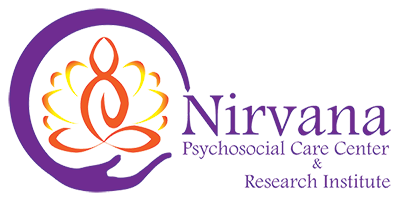Breast Carcinoma among Patients Undergoing Breast Diagnostic Ultrasonography in a Tertiary Care Hospital in Nepal
Abstract
Background Ultrasonography (US) is an important modality for investigating breast lesions, as it lacks radiation exposure, differentiates between solid tumor and fluid-filled cysts, and is particularly-useful for young females with dense breast tissue. This study aimed to determine test characteristics (sensitivity, specificity, positive and negative predictive values, and accuracy), and the prevalence of breast cancer, among patients undergoing diagnostic breast US for clinically-detected abnormalities in a tertiary care cancer hospital in Nepal, comparing US findings with histopathology and cytopathology.
Data and Methods A cross-sectional study was conducted among a convenience sample of 418 female patients who underwent diagnostic breast US between April 15 and September 10, 2022. Data were entered and analyzed on SPSS 25.0. Prevalence of cancer was determined among US patients who were referred for tissue diagnosis on the basis of clinical or US findings. Sensitivity, specificity, positive and negative predictive values, and accuracy of US in detecting breast lesions in comparison to histopathology and cytopathology findings were calculated.
Results The study respondents’ age ranged from 13 to 75 (±11.8) years. Among 97 patients who underwent fine needle aspiration or biopsy based on US findings, 52 (12.4% of total) were diagnosed with breast carcinoma. The sensitivity, specificity, negative predictive value, positive predictive value, and accuracy of US to detect breast cancer were 94%, 100%, 93.7%, 100%, and 96.9%, respectively.
Conclusion Among women with breast complaints or physical examination findings, diagnostic US revealed a high prevalence in the population investigated and demonstrated very good sensitivity, specificity, and accuracy to detect breast cancer. This study confirms the important role of ultrasound in the evaluation of breast lesions, particularly in underdeveloped countries.
References
Alkabban FM, Ferguson T. Breast Cancer. In: StatPearls. Treasure Island (FL): StatPearls Publishing. Available at: https://www.ncbi.nlm.nih.gov/books/NBK482286/. Accessed 12/26/2023.
Youlden DR, Cramb SM, Dunn NAM, Muller JM, et al. The descriptive epidemiology of Female Breast Cancer: An international comparison of screening, incidence, survival and mortality. Cancer Epidemiology. 2012;36(3):237–248. PMID: 22459198. https://doi.org/10.1016/j.canep.2012.02.007
Breast Cancer. Breast cancer facts and statistics, 2022. Available at: https://www.breastcancer.org/facts-statistics. Accessed 12/26/2023.
Jemal A, Bray F, Center MM, Ferlay J, et al. Global cancer statistics. CA Cancer Journal for Clinicians. 2011;61(2):69-90. PMID: 21296855. https://doi.org/10.3322/caac.20107
Institute of Medicine (US) Committee on Women’s Health Research. Women’s Health Research: Progress, Pitfalls, and Promise. Washington (DC): National Academies Press (US); 2010. APPENDIX B, Mortality Statistics. Available from: https://www.ncbi.nlm.nih.gov/books/NBK210146/. Accessed 12/26/2023.
Akram M, Iqbal M, Daniyal M, Khan AU. Awareness and current knowledge of breast cancer. Biological Research. 2017;50(1):33. PMID: 28969709; PMCID: PMC5625777. https://doi.org/10.1186/s40659-017-0140-9
Nepal Cancer Hospital. Breast Cancer. Nepal Cancer Hospital and Research Center. Available at: https://www.nch.com.np/breast-cancer/. Accessed 9/18/2022.
Wang L. Early Diagnosis of Breast Cancer. Sensors. 2017;17(7):1572. PMID: 28678153. PMCID: PMC5539491. https://doi.org/10.3390/ s17071572
Devolli-Disha E, Manxhuka-Kërliu S, Ymeri H, Kutllovci A. Comparative accuracy of mammography and ultrasound in women with breast symptoms according to age and breast density. Bosnian Journal of Basic Medical Sciences. 2009;9(2):131-136. PMID: 19485945; PMCID: PMC5638217. https://doi.org/10.17305/bjbms.2009.2832
Zhang Y-N, Wang C-J, Xu Y, Zhu Q-L, et al. Sensitivity, specificity and accuracy of ultrasound in diagnosis of breast cancer metastasis to the axillary lymph nodes in Chinese patients. Ultrasound in Medicine and Biology. 2015;41(7):1835–1841. PMID: 25933712. https://doi.org/10.1016/j.ultrasmedbio.2015.03.024
Gonzaga M. How accurate is ultrasound in evaluating palpable breast masses? Pan African Medical Journal. 2010;7(1). PMID: 21918690. PMCID: PMC3172638.
Athanasiou A, Tardivon A, Ollivier L, Thibault F, et al. How to optimize breast ultrasound. European Journal of Radiology. 2009;69(1):6–13. PMID: 18818037. https://doi.org/10.1016/j.ejrad.2008.07.034
Shetty MK. Screening and diagnosis of breast cancer in low-resource countries: What is state of the art? Seminars in Ultrasound, CT, and MR. 2011;32(4):300–305. PMID: 31375171. https://doi.org/10.1053/j.sult.2011.04.002
B.P. Koirala Memorial Cancer Hospital (BPKMCH)). Annual Report 2021. Bharatpur, Chitwan District, Nepal: BPKMCH; 2022.
Bujang MA, Adnan TH. Requirements for minimum sample size for sensitivity and specificity analysis. Journal of Clinical Diagnostic Research. 2016;10(10):YE01-YE06. PMID: 27891446; PMCID: PMC5121784. https://doi.org/10.7860/JCDR/2016/18129.8744
Bakker MF, de Lange SV, Pijnappel RM, DENSE Trial Study Group. Supplemental MRI screening for women with extremely dense breast tissue. New England Journal of Medicine. 2019;381(22):2091-2102. PMID: 31774954. https://doi.org/10.1056/NEJMoa1903986
Buist DSM, Abraham L, Lee CI, Breast Cancer Surveillance Consortium. Breast biopsy intensity and findings following breast cancer screening in women with and without a personal history of breast cancer. JAMA Internal Medicine. 2018;178(4):458-468. PMID: 29435556; PMCID: PMC5876894. https://doi.org/10.1001/jamainternmed.2017.8549
Sathian B, Asim M, Mekkodathil A, James S, Mancha A, Ghosh A. Knowledge regarding breast self-examination among the women in Nepal: A meta-analysis. Nepal Journal of Epidemiology. 2019(2):761-768. PMID: 31285936. PMCID: PMC6611207. https://doi.org/10.3126/nje.v9i2.2464
Copyright (c) 2024 Author

This work is licensed under a Creative Commons Attribution 4.0 International License.
All articles published in EJMS are licensed under the Creative Commons Attribution 4.0 International License (CC-BY 4.0). The author(s) as the copyright holder will retain the ownership of the copyrights without any restrictions for their content under the CC-BY 4.0 license, and allow others to copy, use, print, share, modify, and distribute the content of the article even in commercial purpose as long as the original authors and the journal are properly cited. No permission is required from the author/s or the publishers. Appropriate attribution can be provided by simply citing the original article.
On behalf of all the authors, the corresponding author is responsible for completing and returning the agreement form to the editorial office. More information about the terms and conditions, privacy policies, and copyrights can be found on the webpage of the Creative Commons license privacy policy. https://creativecommons.org/licenses/by/4.0/















